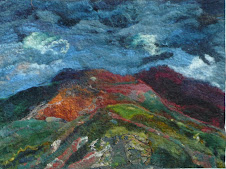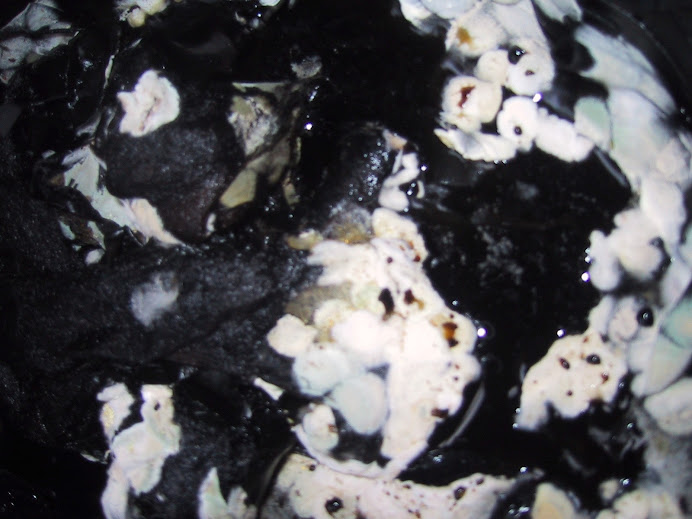
The Complete Guide to Natural Dyeing
Techniques and Recipes for dyeing fabrics,yarns and fibres at home
Eva Lambert and Tracy Kendal
Published by Search Press ISBN 1-84448-527-7
When Amazon first contacted me to tell me there was a new dye book about to be published my first reaction was “ Oh no not another one” as this will be the third in so many years. However not able to resist a dye book I have now added it to my growing collection. The first impact is colour-loads of glorious colour right from the word go -as the very first pages are pictures of samples of dyed fabrics with the page number of where to find how to dye that colour. In the first chapter there are photo's of quite outstanding fabrics by artists such as Isabella Whitworth whose fabulous scarves are shown and Kimberly Baxter Packwood's compost dyed fabrics. These would inspire anybody to want to try natural dyeing.
The book is very easy to use, clearly laid out and the instructions are good. I love the addition of colour theory, the emphasis on the importance of record keeping as well as the really excellent introduction to tie dying, batik and other resist techniques. The dye recipes are good too although I found myself wondering if you really could simmer water at 60 degrees C . Criticisms? Well there are more than a few- it seems odd to me that a book describing itself as the complete guide to natural dyeing should have nothing in it about the extracts of natural dyes. For example Eva Lambert describes at some length how to random dye yarn in different dye pots a laborious process of tying, un-tying dipping into different dye pots that led me more than ten years ago to greet the appearance of the extract dyes , which allow you to hand paint fibres, with enthusiasm. As I read through the book I also went backwards and forwards in puzzlement as nowhere could I find a difference in mordant recipes for protein and cellulose fibres whether as yarn or as cloth. This I don't understand as alum bonds to protein fibres in an acid environment, to cellulose in an alkaline. The chapters on indigo dyeing is comprehensive,and the picture of all the different fabrics and the different way they have take up indigo quite superb, but the chemistry of indigo dyeing is not fully understood. I am intrigued by the addition of salt to an indigo vat-something Sandberg also does- but I do not like the heavy use of caustic soda( sodium hydroxide) in the indigo vats throughout.
I found the lack of a bibliography more than a little surprising and while I really appreciated the down to earth unfussed approach I also found having the health and safety chapter at the end disconcerting. That said the vibrancy of the colours and the clarity of the instructions makes this book very definitely the best of the new books published in recent years and will start many an eager dyer off on a journey of discovery , inspire others to experiment and me … I am off to try putting salt in an indigo vat something I have never got round to trying.
(if you want to read another review of this book go here for Debbie Bamford's take on the book).
 Show all posts
Show all posts

























